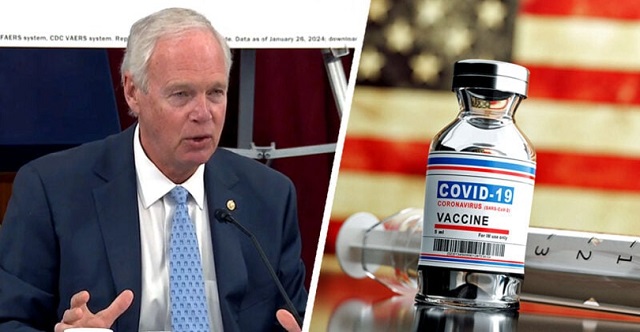 You want my idea for the wage subsidy… well here it is.
You want my idea for the wage subsidy… well here it is.
WARNING: It is so simple to implement, there is no way a government would do it.

 You want my idea for the wage subsidy… well here it is.
You want my idea for the wage subsidy… well here it is.
WARNING: It is so simple to implement, there is no way a government would do it.
People have said “you are quick to pick apart the wage subsidy, so what is your solution?”
So… you asked for it… here it is:
I’ve said it from the very beginning that it should resemble EI support. All they should be doing is simple.
(No this is not an April Fool’s joke… but I am hoping the Press Conference on April 1, 2020 by the Minister of Finance was)
I was fine with EI amounts… but since we have the Canadian Emergency Response Benefit (CERB)… let’s use that amount to keep it more simple.
The amount is this:
(just like the CERB). $2,000 per worker per month, taxable, and no withholdings up front
Put a ‘clawback’ amount on those that are getting it like the clawback on Old Age Security or regular EI benefits for when they file income tax next year.
The 3-prong approach to the subsidy
Prong 1 – CERB from Service Canada
Everyone should get it. Yes, everyone.
However, anyone that makes more than the EI maximum in 2020 must pay back 30 cents of the CERB on every dollar over the $54,200 EI maximum threshold when they file their 2020 taxes.
So when you file your personal 2020 income tax, if you ended up making more than $80,667 in income, you will have had to pay back the full $8,000 of CERB received on a T4E.
This results in helping everyone today, help jump start the economy when we need to and have those that get back on their feet quicker, paying some or all of it back.
If you received both the CERB from Service Canada, and the CERB through your employer, you have to pay back the amount greater than the $8,000 received, and then any other amount based on the formula above.
This will prevent or reduce the double dip.
Prong 2 – CERB through the Small Business employer
The small business (less than $15M in assets of all associated corporations) employer would also get the CERB on a per-employee basis. They already have to fill out the number of employees when they file their remittance forms, so what’s the difference?
This $2,000 flows through to subsidize the wages, and must be paid to the employees. You create a different box number to track it on the T4 slips next year for audit purposes and to make sure the employee got the money.
I know this isn’t 75%, but the 75% was a capped amount anyways. That’s why I said keep it simple.
In order to incentivize the small business employer so they don’t lay them off, treat it as a flow through, and non-taxable to the employer.
So if there are five employees at the small business, the employer will get $10,000 of CERB to flow through to the employees.
The employee’s wages will be subsidized by the $2,000 amount, and they will put the $2,000 in a different box on each T4 slip for tracking purposes.
In order to incentivize the employer to act as the flow-through for Service Canada, this $2,000 will not be subject to EI or CPP by the employer and will not be included in the taxable income of the employer.
This allows the employer to claim the full wage deduction, have subsidized payroll costs, and save the income tax amount by deducting the full payroll.
By not counting it as income, this tax and remittance savings can be viewed liked an “admin fee” for acting on Service Canada’s behalf.
On $10,000 (5 employees) this would save up to $252 in Employer EI, $525 in Employer CPP, and $900 in federal income tax.
Cost to government for employer being the administrator instead of Service Canada: $1,167.
Incentive for employer to NOT lay off the staff, $10,000 in wage costs… and $1,167 in tax savings.
Prong 3 – CERB through Large Corporations
If the employer is getting the CERB on a per-employee basis and they are a large (greater than $15M in assets) corporation or associated group, allow them to not pay employer EI or CPP on the CERB.
100 employees = $200,000 = up to $5,040 in reduced EI, and $10,500 in reduced CPP remittances as the incentive.
So the employer gets $2,000 per employee as a subsidy to cover wage costs, and does not have to do payroll withholdings on the amount, saving them a total of $200,000 + 5,040 + 10,500 = $215,540.
Or put another way, they can save $15,540 by not laying them off.
If that’s not enough incentive, then perhaps look at it being only 50% taxable, which in the example above, would reduce Federal income tax by $15,000 (using 15% general rate x 50% x $200,000)
Audit Tracing
By simplifying the process, there is less ability for abuse.
Service Canada will issue everyone a T4E with the CERB they personally received from them (no application necessary).
T4 box numbers can be reconciled by CRA on slip filing to amounts of CERB received by the employer through the PIER system.
Those same boxes can be reconciled to specific individuals on tax filings to see if there were any that should repay.
Amounts greater than $8,000 received by anyone will need to be repaid.
Those with income over the EI Maximum amount, will have to repay some or all of the CERB back when they file.
If you don’t agree… well… the specific repayment formula can be figured out later… we have a year for that. We need the money in the public’s hands now though.
In Conclusion
These incentives and recapture mechanisms will reduce the likelihood of layoffs in low-margin industries like hospitality since $2,000 a month goes a long way to covering those wages; it will “Flatten the EI Curve” (trademark pending – not really… but I like saying it)
It would get everyone back working quicker after this is done by maintaining the connection to employers, and get the economy kick-started with cash injections at the front of this thing, rather than the end.
In the end… you have employers flowing the $2,000 through to the employee on Service Canada’s behalf as a no-withholding amount and a nominal cost to the employer to administer it, rather than Service Canada processing hundreds of thousands (if not millions) of individual applications.
If they are a small business, they actually get a tax savings by being the administrator and helping Service Canada in the process.
If they are a large business, they can have a good chunk of payroll costs reduced by not having to pay EI and CPP on the amount, and perhaps tax savings.
In the end, every worker gets $8,000 over 4 months just to buy everyone time and we have Flattened the EI Curve.™
Biography of Cory G. Litzenberger, CPA, CMA, CFP, C.Mgr can be found here.


By Emily Kopp
The letter, exclusively shared with the Daily Caller News Foundation, seeks more details about those deaths and the passive U.S. vaccine safety surveillance system and complacent Food and Drug Administration (FDA) bureaucracy under the Biden administration that delayed their reporting for years.
“Nobody wanted to admit that these things were causing death. This is absolutely a case of willful ignorance,” Johnson said in an interview with the DCNF.
As a nonprofit, we are dependent on the generosity of our readers.
Please consider making a small donation of any amount here.
Thank you!
The letter requests from the Department of Health and Human Services (HHS) “all records referring or relating to the review of the 96 reports of death following a COVID-19 vaccine … including but not limited to, any memorandum or report created following that review and the data underlying the reports.”
“I am grateful that we now have individuals at our federal health agencies who care about vaccine safety and efficacy. I am, however, disappointed that despite having subpoenaed HHS for the type of data and information described in Dr. Prasad’s memo, it does not appear to have been provided to my office,” the letter reads.
HHS did not immediately respond to a request for comment.
“This is a profound revelation. For the first time, the US FDA will acknowledge that COVID-19 vaccines have killed American children. Healthy young children who faced tremendously low risk of death were coerced, at the behest of the Biden administration, via school and work mandates, to receive a vaccine that could result in death. In many cases, such mandates were harmful. It is difficult to read cases where kids aged 7 to 16 may be dead as a result of covid vaccines,” Prasad wrote. “There is no doubt that without this FDA commissioner [Marty Makary], we would not have performed this investigation and identified this safety concern. This fact also demands serious introspection and reform.”
“One reason I’m writing this letter is that this memo needs much greater attention. This should be a blockbuster,” the Wisconsin senator told the DCNF.
Johnson, who has investigated the issue of COVID vaccine-linked adverse events since June 2021, also seeks more clarity about why FDA only examined a fraction of total reports to the Vaccine Adverse Event Reporting System (VAERS). He noted that the 96 deaths scrutinized by FDA staff in its investigation represents a sliver of the raw VAERS reports of 9,299 deaths worldwide within two days of vaccination.
Distinguishing which VAERS reports indicate genuine fatal side effects and which represent mere coincidences requires autopsy reports, which regulators and physicians often do not request because of a ideological reluctance to acknowledge that vaccines can carry risks, Johnson told the DCNF. Johnson said he has spoken to families who suspected a vaccine injury but struggled to obtain autopsies.
“With some of these officials at federal health agencies and within the medical establishment, vaccines are religion. The do not want to muddy the water with facts,” he said.
Johnson’s letter notes that Prasad acknowledged a culture at FDA “where vaccines are exculpated rather than indicted in cases of ambiguity,” and that the true number of deaths is likely higher.
Johnson has as chair of the Senate Permanent Subcommittee on Investigations investigated the Biden administration’s headlong expansion of COVID vaccines and booster shots to healthy young adults and children.
His committee uncovered internal federal documents showing the Centers for Disease Control and Prevention never updated its vaccine surveillance tool “V-Safe” to include cardiac symptoms, despite naming myocarditis as a potential adverse event by October 2020, per a May report. The investigation also found that top officials at FDA obstructed a warning to pediatricians and other providers about the risk of myocarditis after the May 2021 authorization of the Pfizer vaccine for 12 to 15-year-olds, months after Israeli health officials first detected the safety signal in February 2021.
Johnson’s letter highlights missing safety studies that the drugmakers never conducted.
Under the Biden administration, the FDA waived the responsibility of the drugmakers to conduct post-market studies that they had pledged to regulators, scientific advisors on the FDA Vaccines and Related Products Advisory Committee, and the public that they would complete. These uncompleted studies include promised research into subclinical myocarditis, undocumented rates of heart inflammation without obvious symptoms, Prasad’s memo states.
Johnson’s letter reveals the committee has not received any records from HHS about the liability shield for COVID-19 vaccines.
A public health media personality reported on Dec. 11 that FDA staff had downgraded the certainty with which it can attribute some the deaths to the vaccine in the weeks since Prasad received their top line results — echoing prior leaks from career officials aimed at undermining FDA’s new bosses.
Center for Drug Evaluation and Research Acting Director Tracy Beth Hoeg first concluded in a separate analysis that there were in fact deaths in children in the summer, but career staff leaked the results to reporters who “portrayed the incident as Dr. Hoeg attempting to create a false fear regarding vaccines” soon after, per Prasad’s memo.
Johnson’s letter seeks documentation of Hoeg’s meeting, including “a list of all attendees.”


China is escalating its legal fight with Missouri after the state secured a massive court victory earlier this year over Beijing’s role in the COVID-19 pandemic, according to the state attorney general’s office.
Missouri Attorney General Catherine Hanaway announced Tuesday that the People’s Government of Wuhan Municipality, the Chinese Academy of Sciences and the Wuhan Institute of Virology have filed a $50 billion lawsuit against the state, claiming Missouri poses an “economic and reputational threat” to the People’s Republic of China (PRC). The suit comes as Missouri moves to seize Chinese-owned assets to collect on a historic federal court judgment the state won in March.
Missouri first sued China in 2020, seeking $25 billion in damages “for causing and exacerbating the COVID-19 pandemic” and for hoarding critical medical supplies while the virus spread, according to the state attorney general’s office. China and several affiliated entities were ordered to pay Missouri roughly $24.49 billion, plus post-judgment interest. Senior U.S. District Judge Stephen Limbaugh ruled that China and the other defendants “failed to appear or otherwise answer after being properly served,” resulting in the default judgment.
As a nonprofit, we are dependent on the generosity of our readers.
Please consider making a small donation of any amount here.
Thank you!
Missouri maintained that China was attempting to shield itself from legal consequences by relying on proxy organizations to speak on its behalf — an accusation Beijing now disputes in its own lawsuit against the state.
In its lawsuit, China alleges that Missouri’s actions have had “negative effects on the soft power” of Wuhan and have “belittled the social evaluation” as well as adversely affected the “productivity and commercialization of scientific and technological achievements” of the Chinese Academy of Sciences and the Wuhan Institute of Virology. The filing further alleges that Missouri’s “vexatious litigation” has “defamed Plaintiffs’ reputation, resulting in huge economic losses of the Plaintiffs, and deeply endangering sovereignty, security and development interests of China.”
The suit names the state of Missouri, Republican Missouri Sen. Eric Schmitt and the former Missouri Attorney General Andrew Bailey as the defendants.
China’s lawsuit demands the defendants “issue public apologies on New York Times, CNN, Wall Street Journal, Washington Post, YouTube and other American media or internet platforms, and People’s Daily, Xinhuanet and other Chinese media or internet platforms.”
Hanaway rejected the demand and said the state remains focused on enforcing the federal judgment.
“I find it extremely telling that the Chinese blame our great state for ‘belittling the social evaluation’ of The Wuhan Institute of Virology. This lawsuit is a stalling tactic and tells me that we have been on the right side of this issue all along,” Hanaway said in a statement. “We stand undeterred in our mission to collect on our $24 billion judgment that was lawfully handed down in federal court.”
Schmitt described China’s suit as “frivolous lawfare, attempting to absolve themselves of all wrongdoing in the early days of the pandemic.”
“This is their way of distracting from what the world already knows, China has blood on its hands. China lied about the origins of COVID virus, they tried to cover it up, and they upended the world by creating a global pandemic that resulted in immense human loss,” Schmitt added.
Missouri, Hanaway said, is continuing efforts to obtain certification that would allow the state to seize Chinese-owned assets, including real estate, financial interests, and other holdings tied to the defendants.


Bondi Beach Shows Why Self-Defense Is a Vital Right


Ford’s EV Fiasco Fallout Hits Hard


Bondi Beach Survivor Says Cops Prevented Her From Fighting Back Against Terrorists


How Wikipedia Got Captured: Leftist Editors & Foreign Influence On Internet’s Biggest Source of Info


Canada Lets Child-Porn Offenders Off Easy While Targeting Bible Believers


The Uncomfortable Demographics of Islamist Bloodshed—and Why “Islamophobia” Deflection Increases the Threat


Danielle Smith slams Skate Canada for stopping events in Alberta over ban on men in women’s sports


TOTAL AND COMPLETE BLOCKADE: Trump cuts off Venezuela’s oil lifeline